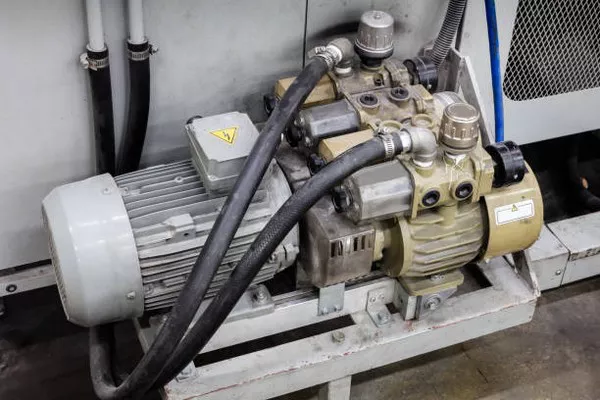In an increasingly interconnected world, the importance of a reliable power supply cannot be overstated. Power outages, whether caused by severe weather, equipment failures, or other unforeseen circumstances, can disrupt our lives and have far-reaching consequences. To mitigate these disruptions, many homeowners are turning to whole home generators as a reliable backup power solution. In this article, we will explore how whole home generators work, their key components, and the benefits they provide.
Understanding the Basics
Whole home generators, also known as standby generators, are designed to automatically provide backup power to your entire home when the primary power source fails. Unlike portable generators, which need to be manually started and connected to appliances, whole home generators operate seamlessly and are permanently installed, ensuring uninterrupted power supply during an outage.
Key Components
Engine: The heart of a whole home generator is its internal combustion engine, typically fueled by natural gas or propane. Some models may also use diesel fuel. This engine is responsible for generating electrical power when the utility grid fails.
Generator Head: The generator head, often referred to as the alternator, is connected to the engine and converts mechanical energy into electrical energy. It consists of coils and a rotor that work together to produce electricity.
Automatic Transfer Switch (ATS): The ATS is a critical component that detects when the utility power goes out and automatically switches the electrical load from the grid to the generator. When utility power is restored, the ATS transfers the load back to the grid and shuts down the generator. This seamless transition ensures that your home receives uninterrupted power without manual intervention.
Control Panel: The control panel is the brain of the generator system, monitoring various parameters, such as voltage, frequency, and engine temperature. It also manages the startup and shutdown sequences, ensuring the generator functions smoothly and efficiently.
How Does It Work?
Monitoring Utility Power: Whole home generators are designed to continuously monitor the utility power supply. When the system detects a drop in voltage or an interruption in power, it immediately signals the ATS to initiate the startup process.
Engine Start-Up: Upon receiving the signal from the control panel, the generator’s internal combustion engine is activated. The engine runs on the chosen fuel source (natural gas, propane, or diesel) and begins generating mechanical energy.
Mechanical to Electrical Energy Conversion: The generator head, connected to the engine, converts the mechanical energy produced by the engine into electrical energy. This energy is then delivered to your home’s electrical system through the ATS.
Power Distribution: The ATS transfers the electrical load from the utility grid to the generator. This ensures that critical appliances and circuits in your home, such as refrigeration, heating and cooling systems, lights, and essential outlets, receive power without interruption.
Continuous Monitoring: While the generator is running, the control panel continuously monitors its performance, ensuring that voltage and frequency remain within acceptable limits. It also oversees the temperature and oil levels in the engine, making necessary adjustments as needed.
Automatic Shutdown: When utility power is restored, the control panel instructs the ATS to transfer the load back to the grid. The generator is then safely shut down, ready for the next power outage.
Benefits of Whole Home Generators
Uninterrupted Power Supply: The primary advantage of a whole home generator is its ability to provide uninterrupted power to your entire home during outages, protecting you from inconvenience, discomfort, and potential damage to appliances and electronics.
Automatic Operation: Whole home generators require no manual intervention. They start and stop automatically, ensuring that your home stays powered even when you’re not there to initiate the backup system.
Increased Home Value: The installation of a whole home generator can enhance your property’s value and marketability. Prospective homebuyers often view it as a valuable asset, providing peace of mind in case of power interruptions.
Comprehensive Coverage: These generators can power all your essential appliances and systems, including heating and cooling, refrigeration, security systems, and medical equipment, depending on the generator’s capacity.
Fuel Options: Whole home generators offer the flexibility to choose from different fuel sources, including natural gas, propane, and diesel. This allows homeowners to select the option that best suits their needs and preferences.
Minimal Maintenance: While regular maintenance is necessary to ensure the generator’s reliability, modern models are designed for ease of use, with features such as self-diagnostic capabilities and remote monitoring.
Conclusion
Whole home generators play a vital role in ensuring that your daily life remains uninterrupted during power outages. By seamlessly switching from the utility grid to backup power, they keep essential systems and appliances running smoothly. Understanding the key components and functioning of these generators is crucial for homeowners considering investing in this reliable backup power solution.
While the initial cost of purchasing and installing a whole home generator may seem substantial, the peace of mind and protection it offers during prolonged power outages make it a valuable addition to any home. With automatic operation, a variety of fuel options, and comprehensive coverage, whole home generators provide the ultimate solution for safeguarding your home and family from the inconvenience and potential dangers associated with power loss.

